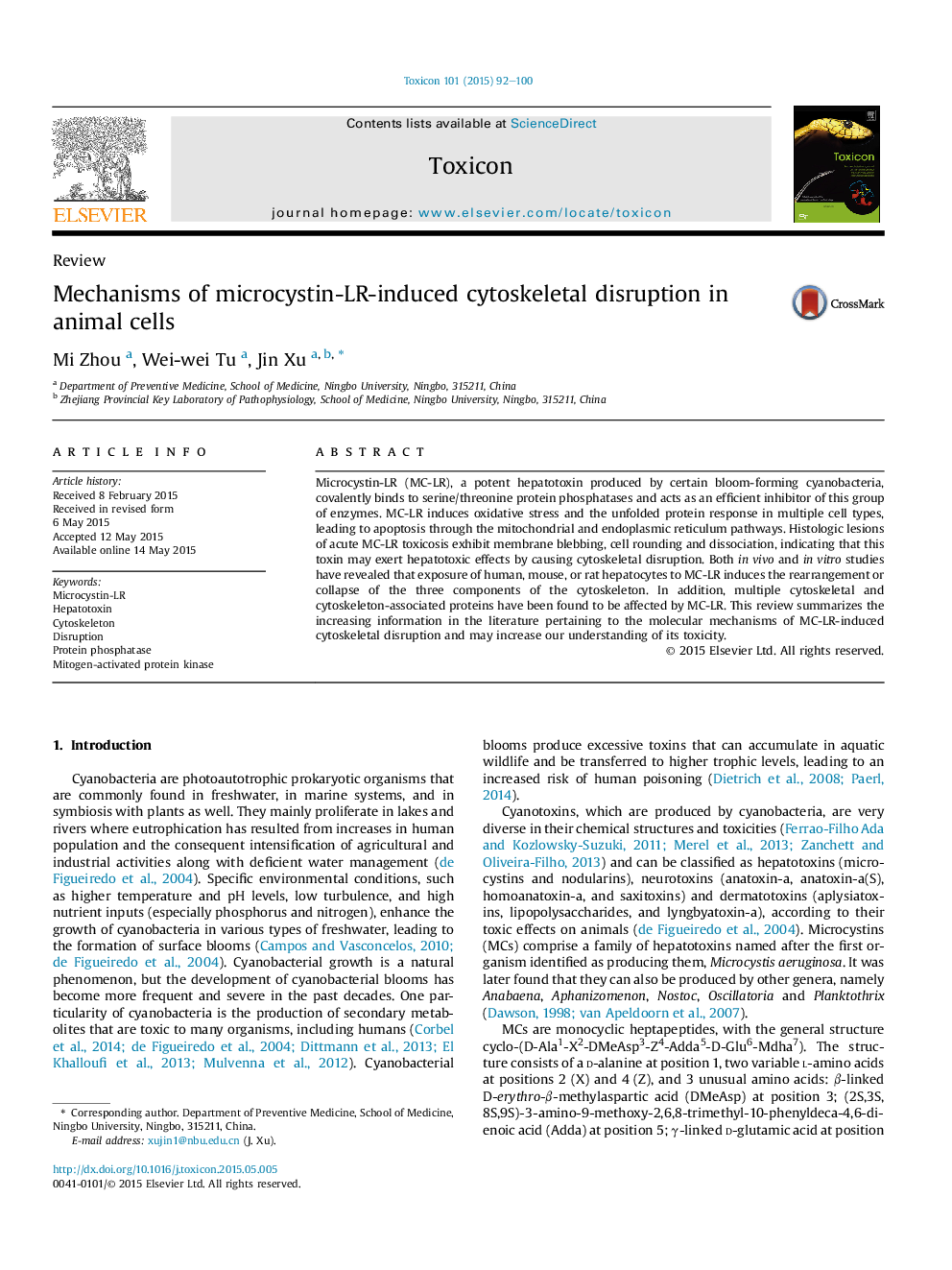| Article ID | Journal | Published Year | Pages | File Type |
|---|---|---|---|---|
| 8395423 | Toxicon | 2015 | 9 Pages |
Abstract
Microcystin-LR (MC-LR), a potent hepatotoxin produced by certain bloom-forming cyanobacteria, covalently binds to serine/threonine protein phosphatases and acts as an efficient inhibitor of this group of enzymes. MC-LR induces oxidative stress and the unfolded protein response in multiple cell types, leading to apoptosis through the mitochondrial and endoplasmic reticulum pathways. Histologic lesions of acute MC-LR toxicosis exhibit membrane blebbing, cell rounding and dissociation, indicating that this toxin may exert hepatotoxic effects by causing cytoskeletal disruption. Both in vivo and in vitro studies have revealed that exposure of human, mouse, or rat hepatocytes to MC-LR induces the rearrangement or collapse of the three components of the cytoskeleton. In addition, multiple cytoskeletal and cytoskeleton-associated proteins have been found to be affected by MC-LR. This review summarizes the increasing information in the literature pertaining to the molecular mechanisms of MC-LR-induced cytoskeletal disruption and may increase our understanding of its toxicity.
Keywords
Related Topics
Life Sciences
Biochemistry, Genetics and Molecular Biology
Biochemistry, Genetics and Molecular Biology (General)
Authors
Mi Zhou, Wei-wei Tu, Jin Xu,
